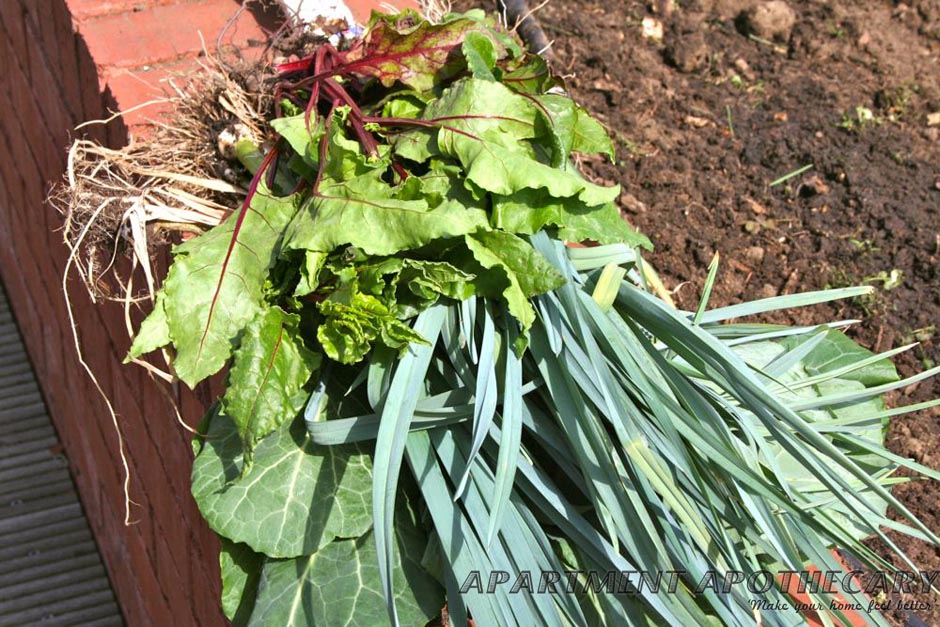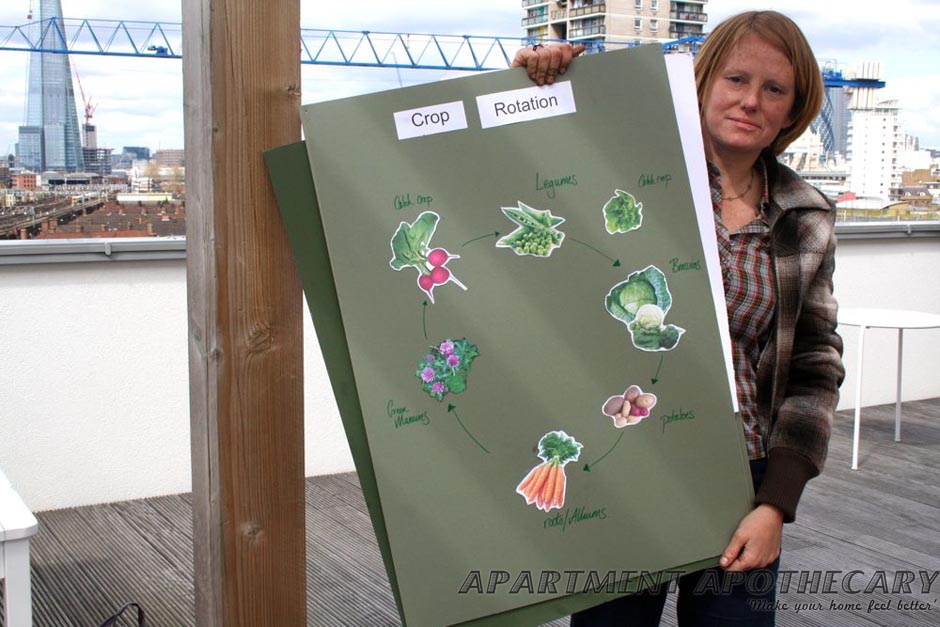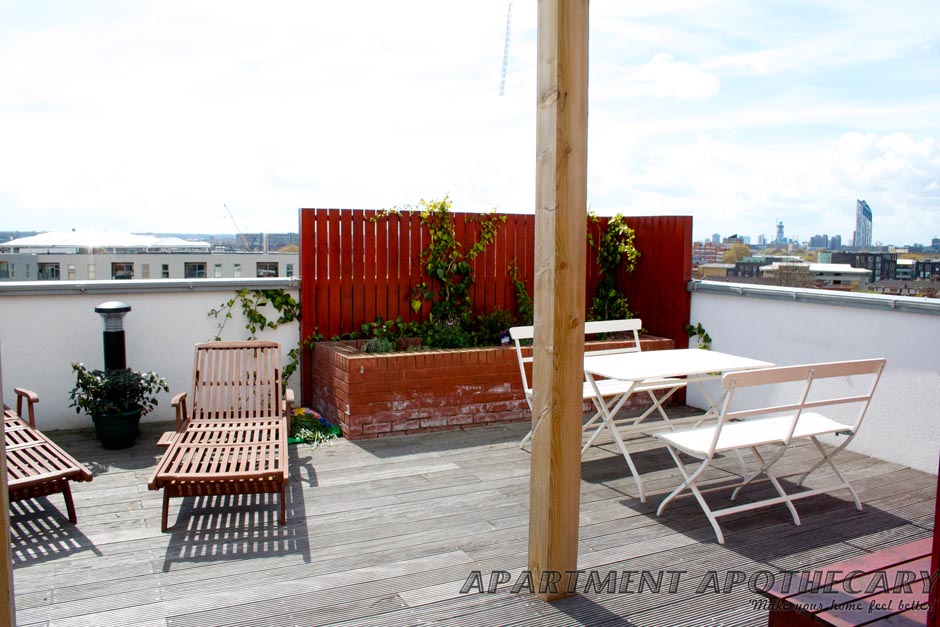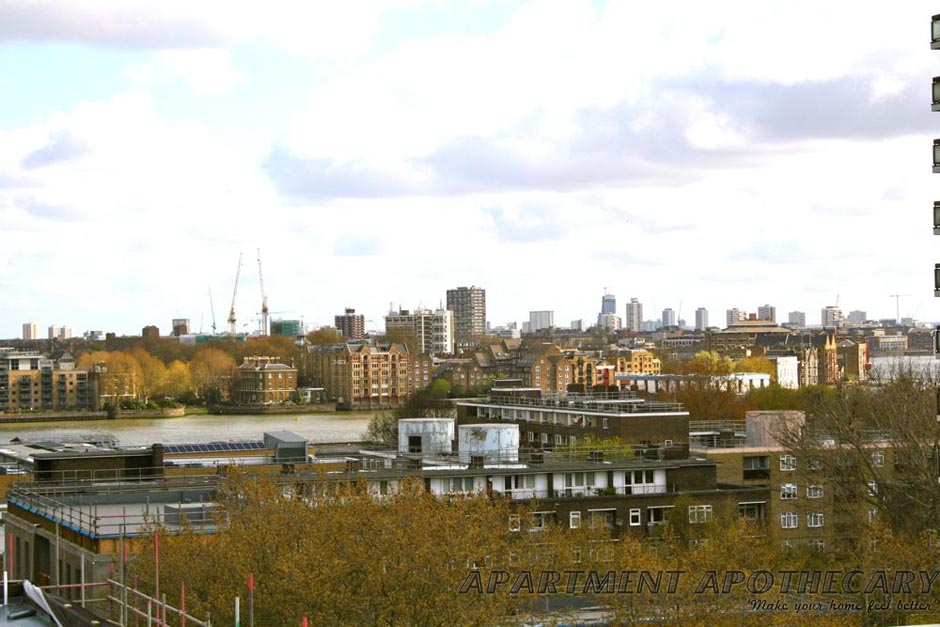I do not know anything about gardening. However, I really want to learn, not least because we are lucky enough to have the most amazing roof garden that looks out over London as far as you can see. This is rare in London so it seems stupid not to make the most of it. It’s a really large space but lacks any colour, interest or beauty.

The developers decked the terrace, which is fine, but they used a horrible red coloured stain for the fencing and a different colour wood for the pergola. It would be best if this mis-matching wood could be covered with climbing plants.

The pergola could be absolutely stunning if over the next couple of years we could cover it in climbing plants entwined with lights.
The roof garden has 360 degree views of London. I just love it up here.
Our first step is to join with some of the other residents from our apartment block to form a ‘gardening club’. We apply for some funding from ‘Capital Growth’ and a three hour gardening session, which we do on lovely Sunday in February, one of the first bright days this year. The planting that was done by the developers is so boring looking so we begin by pulling up all the plants, potting some of the nicer looking ones and destroying others like the buddleia plants, which get everywhere.

It was really important to dig up the numerous buddleia plants that can become a pest as they grow so large, spread very easily and develop huge roots. Very large plants are not suitable for the raised beds we have as they will dominate too much.

Another reason for trying to clear the beds was we needed to try to improve the soil as the developers had used very poor quality, sandy soil that is not conducive to lush growth.

We had planted a few food plants last winter and these are out inspiration to try to make the majority of our planting edible and any crops will be shared amongst the residents in our block.
The next step is to move the compost bin we set up last year. At the moment it is slap bang in the middle of the biggest bed and very un-sightly. So we move it to a corner, turn it, and use what compost has been made to enrich the soil in each bed.

Compost can be made by adding food waste (uncooked is best, especially if you don’t want it to smell) and cardboard and turning it every now and then.

The bits of waste that have not turned into compost yet will need to be ripped up into smaller pieces and added to the compost bin again.
We then decide what to grow and where. The ladies from ‘Capital Growth’ talk us through lots of different varieties of salad leaves, vegetables and flowers that will work well together and they give us a quick lesson about the best type of compost to use and how to look after soil.

Rotating crops enables the plants to grow as well as possible as each plant uses different nutrients.
We decide to have herb, wildflower, vegetable and lettuce beds and other various flowers to make it look pretty and to attract certain pests so they do not ruin the food crops. We then learn how to sow seeds.

We try to choose plants that will complement each other for example, we plant nasturtiums that will attract black fly away from our food crops.
I also plant a few flowers to get us started. I put some sweet peas at the back of a couple of the beds as I’ve learnt they grow very tall and like to trail up or along whatever is there. I also put in some geraniums and snap dragons for a bit of immediate colour.
What have I learnt so far?
1) Plants need to be re-potted or fed (once or twice a year) to remain healthy as it is just as important to look after soil as it is to look after the actual plant.
2) Leaf mulch makes excellent compost.
3) Flowers and food plants should be mixed together as this prevents pests (I need to find out more about this).
4) Plant bulbs at the beginning of the autumn.
5) If you don’t harvest the food that you grow it will flower (otherwise known as bolting).
6) You can sow lettuce seeds in the spring and as long as you continuously harvest the outer leaves they will last the summer long. There are varieties that you can then plant at the end of the summer that will last throughout winter (names of these varieties to follow).
7) A perennial plant is a plant that lives for more than two years so these are easy to maintain. They will usually die back over the winter and then return in the spring from their root-stock rather than going to seed as an annual plant does.
8) Once bulbs, such as daffodils, have faded you don’t have to have an empty pot or bed. If you have planted the bulb deep enough you can plant perennial bedding plants (such as snap dragons, geraniums, pansies) on top of the bulbs. This creates a very easy to maintain and pretty bed or pot that does not require planting every year.
9) Compost needs turning regularly.
10) You should try to recreate the wild as much as possible, which means you should combine as many different types of flowers and plants as possible. For example, a lot of flowers keep away pests from vegetable plants and vice versa.
I will keep you updated over the next few months on how much progress we make. Hopefully, Bermondsey will be in bloom soon.









I’m feeling slightly envious and wishing that I had a roof top garden. Love the sense of community you have with your neighbours and that lots of you are involved. I think you should all pay a visit to Colombia Flower Market on a Sunday. Lots of plants and pots to look at.
Your neighbours must love you!
Can’t wait for an update. Wonderful to have an almost blank canvas to work with, not to mention the stunning views.
thanks for all these useful ideas and tips, really helpful. i will look more into ‘capital growth’ as well, thanks. I am sure the spring/summer transformation will be spectacular and tasty! amazing work, creativity and dedication. keep it coming.